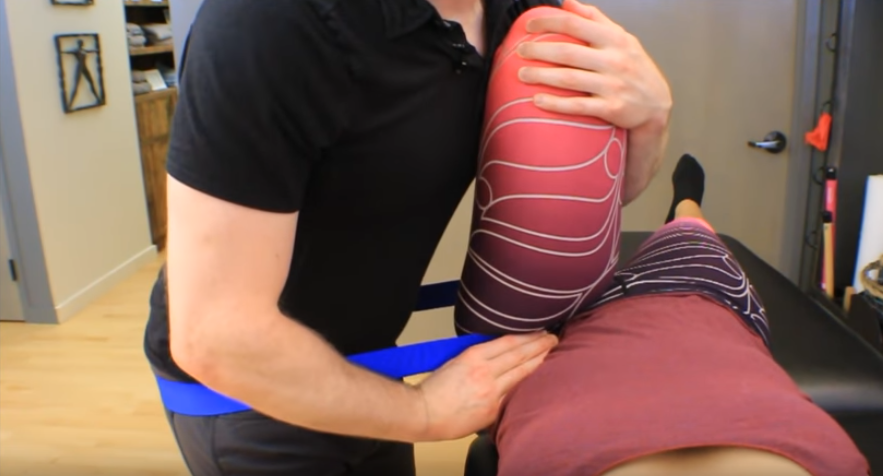
Joint Mobilization: Hip Joint and Knee Joint
Joint mobilizations for the hip and knee joint. Types of mobilizations, self-administered mobilizations, and interventions for lumbopelvic hip complex (LPHC) dysfunction. Optimal intervention for knee bow in, knee bow out, anterior pelvic tilt, excessive forward lean, and asymmetrical weight shift. The risk of adverse events, validity, efficacy, screening, and reliability of hip and knee mobs.
Course Description: Hip Joint and Knee Joint Mobilizations
Introduction
This course describes joint mobilizations for the hip joint and knee joint (a.k.a. pelvifemoral joint, ichiofemoral joint, femorotibial joint, tibiofemoral joint, etc.). Several terms and definitions have been used to describe the "mobilizations" (e.g. mobilisations) that are taught in this course. The Brookbush Institute uses a conventional definition of "mobilization" that includes low amplitude, low-velocity, oscillatory techniques intended to reduce the stiffness of joints exhibiting a decrease in passive accessory range of motion (a.k.a. arthrokinematic motion and specifically glide or slide). Note, the term "manipulation" is reserved for high-velocity techniques taught in a separate set of courses.
This course includes several of the most commonly recommended techniques used to address hip joint and knee joint stiffness, and improve hip and knee range of motion (ROM). For example, research has demonstrated that hip joint mobilizations may be used to address a loss of hip rotation, increase gluteal muscle activity, and improve functional outcomes for hip osteoarthritis patients. These techniques may also be used in an integrated approach for lower extremity dysfunctions (LED) and lumbo pelvic hip complex dysfunctions (LPHCD) including iliotibial band syndrome, patellofemoral pain syndrome (PFPS), and hip impingement syndrome, and postural dysfunctions including knee valgus, knee varus, excessive forward lean, anterior pelvic tilt, or asymmetrical weight shift. Some evidence and clinical outcomes even suggest that addressing hip dysfunction can have a significant effect on ankle mechanics and heel strike during gait.
The techniques in this course are recommended for all clinical human movement professionals (physical therapists, physical therapy assistants, athletic trainers, massage therapists, chiropractors, occupational therapists, etc.) with the intent of developing an evidence-based, systematic, integrated, patient-centered, and outcome-driven approach.
Techniques Covered in this Course
Sample Intervention (Limited Hip Rotation ROM)
- Manual Release
- Mobilization or Manipulation
- Manual Lengthening
- Instrument Assisted Soft Tissue Mobilization
- Activation
- Reactive Activation
- Integration
Related Courses
Additional Joint Mobilization Courses
- Joint Mobilizations: Ankle and Tibiofibular Joints
- Joint Mobilizations: Knee and Hip Joints
- Joint Mobilizations: Lumbar Spine and Sacroiliac Joints
- Joint Mobilizations: Cervical and Thoracic Spine
- Joint Mobilizations: Shoulder, Sternoclavicular, and Acromioclavicular Joints
- Joint Mobilizations: Elbow and Proximal Radioulnar Joints
For an introduction to joint mobilizations and manipulations:
Introduction
Research Corner Summary
Research Corner: Hip
3 sub-categoriesResearch Corner: Knee
3 sub-categoriesVideo Demonstration
2 sub-categoriesvideoBibliography
© 2024 Brookbush Institute. All rights reserved.

